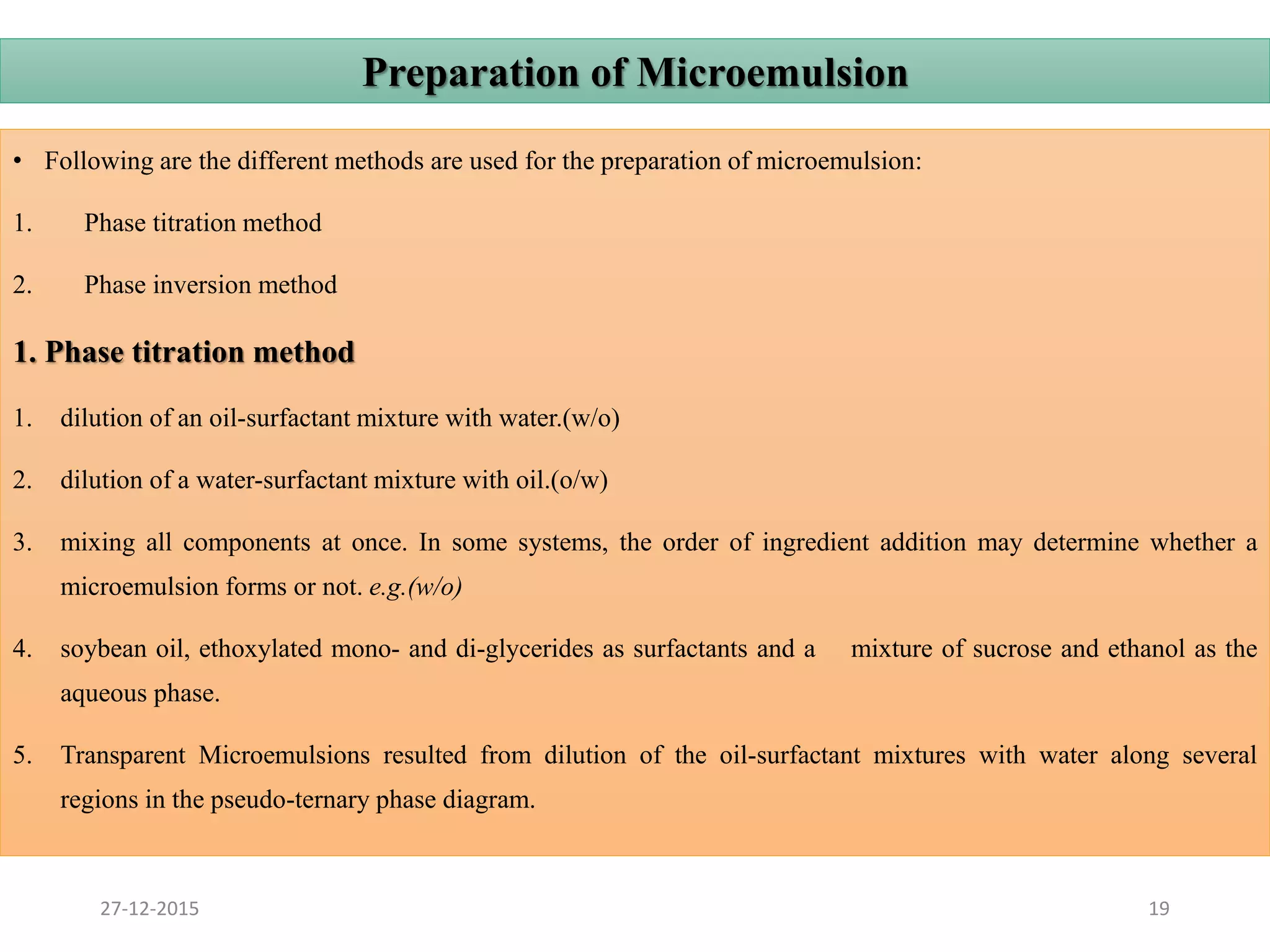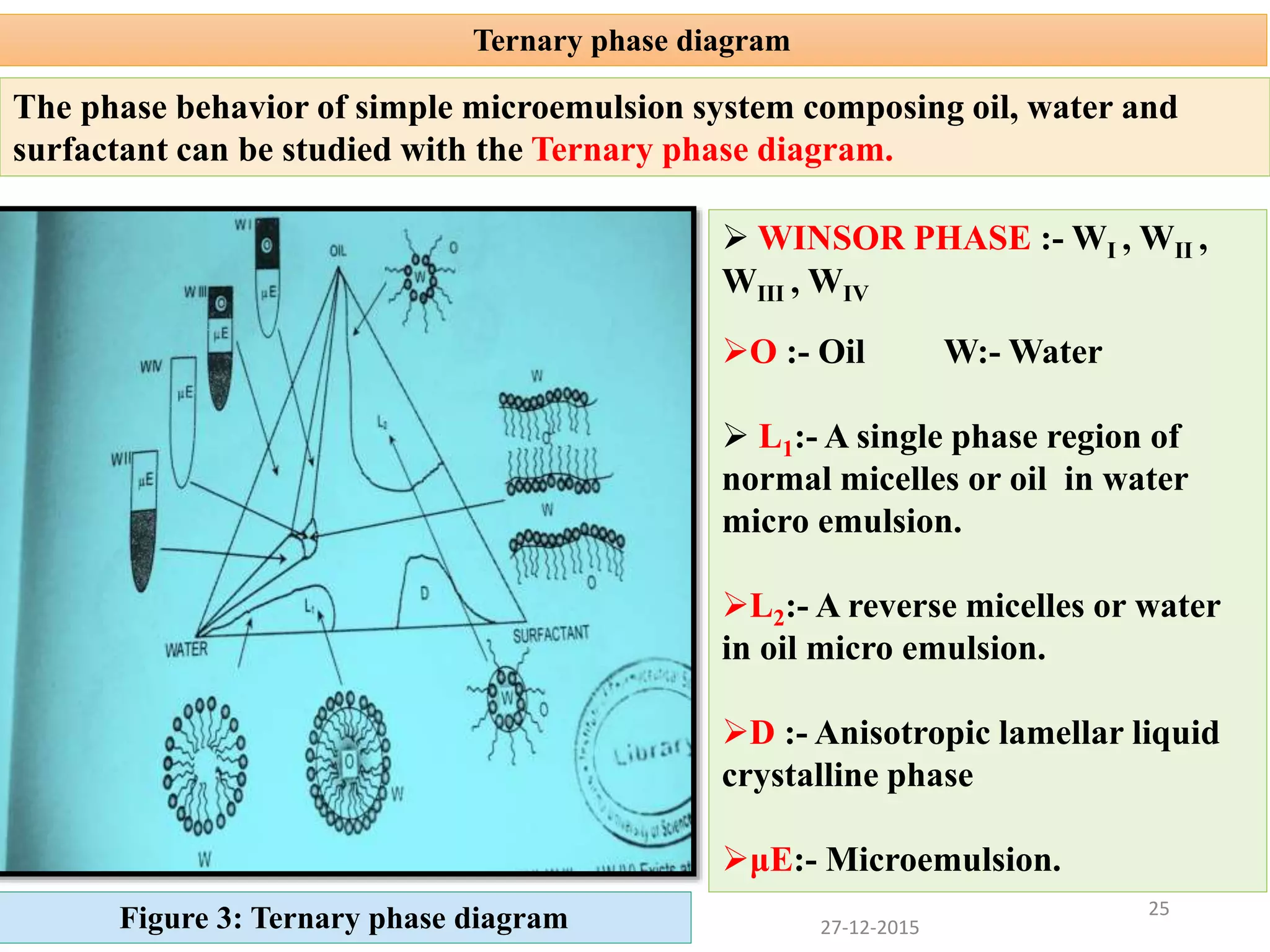Microemulsion is an isotropic mixture of oil, surfactant, cosurfactant and drug that can solubilize both water-soluble and oil-soluble drugs. Upon dilution, microemulsions spontaneously form droplets less than 100 nm in size. Pseudo-ternary phase diagrams can be used to optimize microemulsion formulations for drug delivery and increase oral bioavailability. Key properties of microemulsions include thermodynamic stability and the ability to solubilize compounds due to their low interfacial tension.
![127-12-2015
Microemulsion
Mr. Sagar Kishor savale
[Department of Pharmacy (Pharmaceutics)]
avengersagar16@gmail.com
Department of Pharmacy (Pharmaceutics) | Sagar savale](https://image.slidesharecdn.com/microemulsion-151228072551/75/Microemulsion-1-2048.jpg)
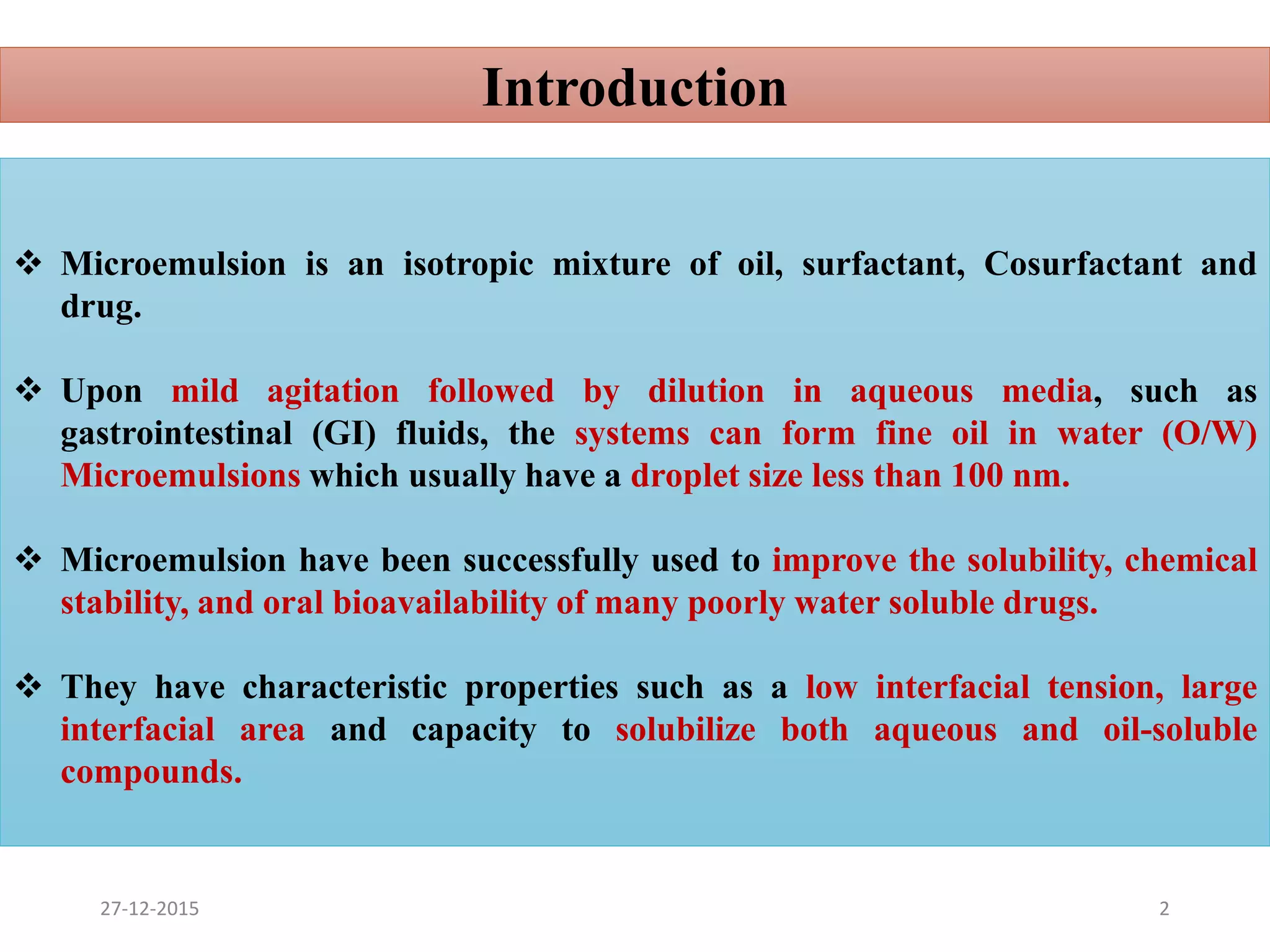

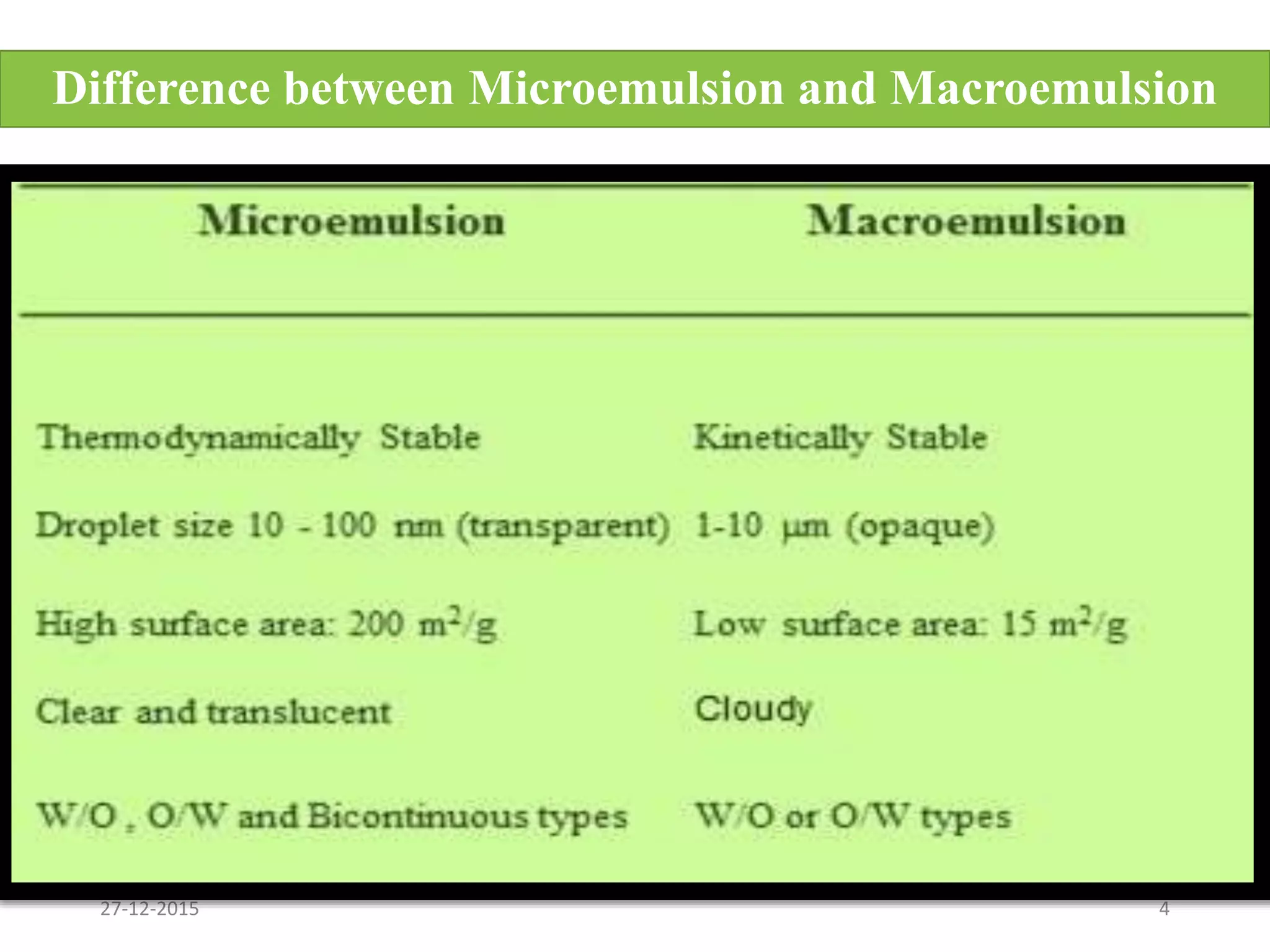






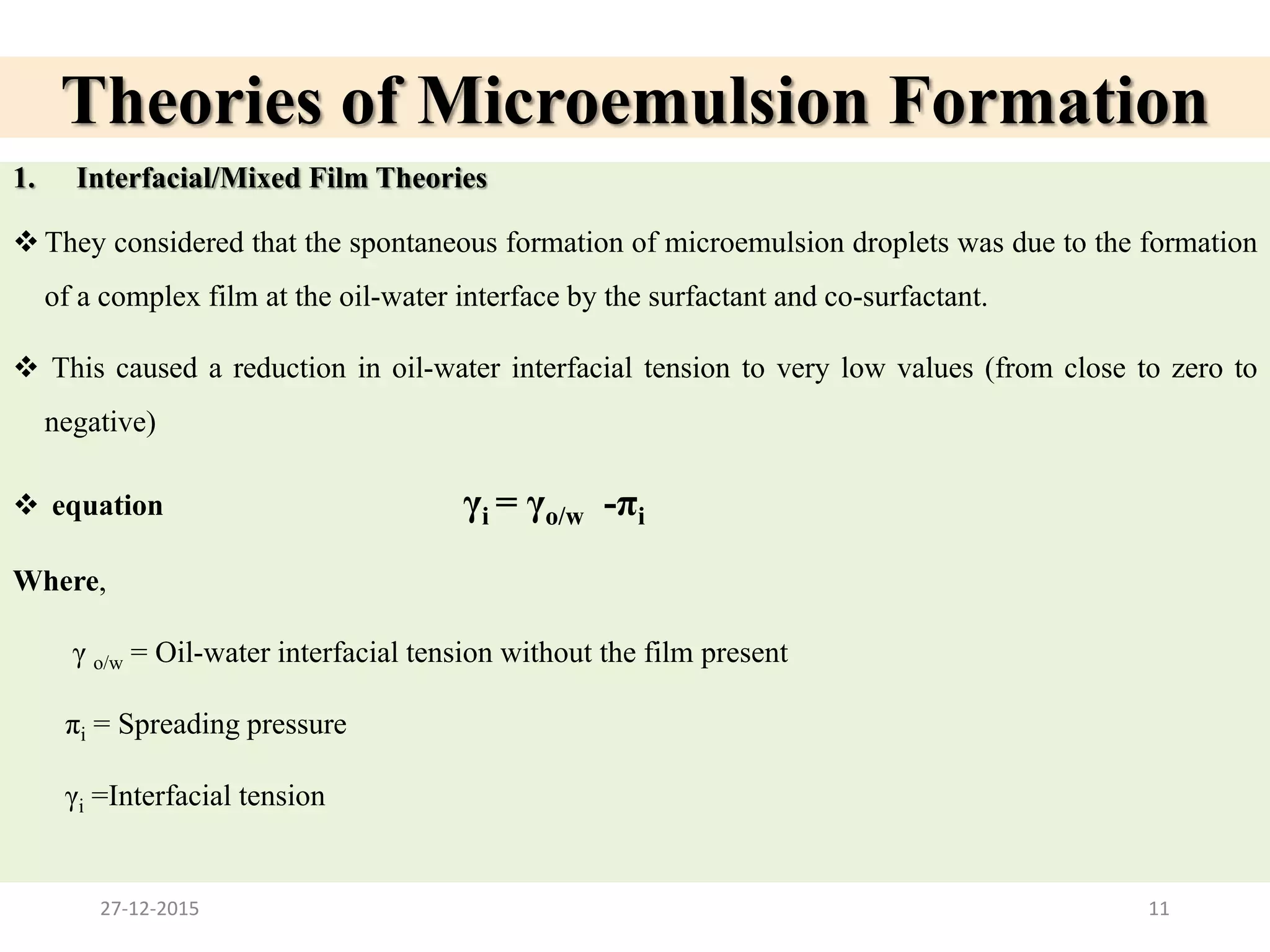






![The oil represents the most important excipient in the Microemulsion formulation. it can
solubilize the amount of the poorly water soluble drug. Both long-chain triglyceride (LCT)
and medium chain triglyceride (MCT) oils with different degrees of saturation have been
used in the design of Microemulsion.
It can not only solubilize large amount of lipophilic drugs but also enhance the fraction of
lipophilic drug transported via intestinal lymphatic system, there by increase its absorption
from GIT.
E.g. - Corn oil, olive oil, soybean oil, hydrolysed corn oil.
Oil
In SMEDDS, generally co-surfactant of HLB value [10-14] is used. such as hexanol,
pentanol and octanol which are known to reduce the oil water interface and allow the
spontaneous formulation of micro emulsion, are used in formulation of SMEDDS.
Co-surfactant
1827-12-2015](https://image.slidesharecdn.com/microemulsion-151228072551/75/Microemulsion-18-2048.jpg)
